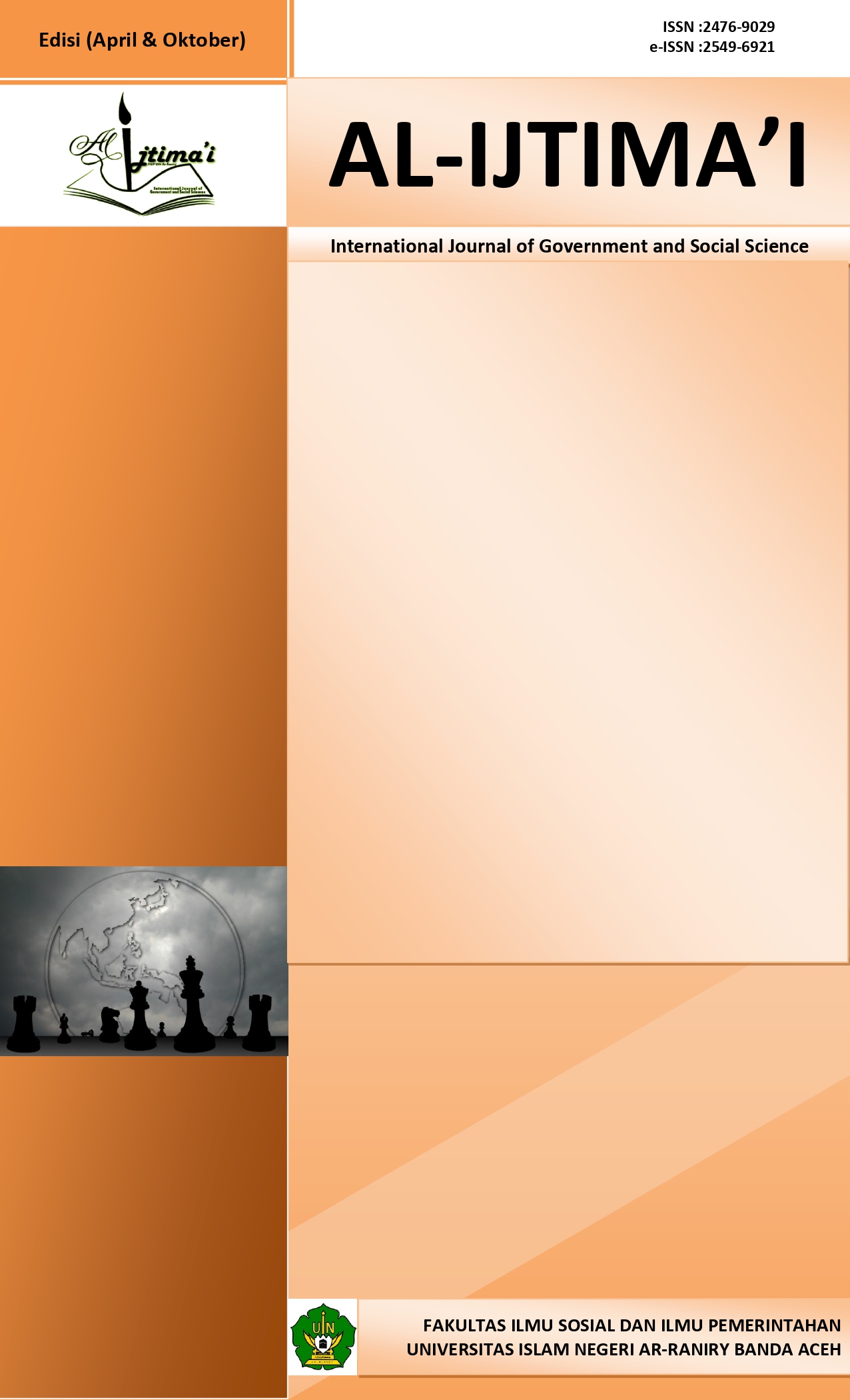Disintegrasi Ummat Islam Granada: Studi Kehancuran Pemerintahan Islam di Andalusia
DOI:
https://doi.org/10.22373/jai.v11i1.8640Keywords:
Granada, Andalusia, Disintegrasi, Pemerintahan IslamAbstract
Granada was the last Muslim territory in the Iberian Peninsula. The Islamic Kingdom of Granada was ruled by the descendants of the Banu Ahmar for two centuries and a half. During this period the leaders of the Banu Ahmar made Granada the center of the Islamic Kingdom in Andalusia and established the Al-Hamra Palace as the center of government. The Islamic Kingdom of Granada experienced various political turmoil caused by various internal and external factors which finally collapsed in 1492 AD. The end of the Islamic Kingdom of Granada also meant the end of the existence of Islam in the Iberian Peninsula.The peak of the decline of the Islamic Kingdom of Granada began when two large Christian kingdoms, namely the Kingdom of Castile and Aragon, united, and the Islamic Kingdom of Granada was led by weak leaders. Finally, Granada fell to the Christian kingdom in 1492 AD. The fate of the Muslim community in Granada ended in a very tragic story. Some of them were forced to convert to Christianity, others experienced very sad torture. The rest were forced to migrate to North African regions such as Morocco, Tunisia, and Algeria. Today, several historical Islamic buildings in Andalusia, such as palaces and mosques, still stand strong, but there are no descendants of the Muslim Andalusian community who are Muslims.
References
Akbarul Falah, Ali, dan Dzulkifli Hadi Imawan. (2023) “Kontribusi Keilmuan Dan Peradaban Islam Andalusia.” Sumbula: Jurnal Studi Keagamaan, Sosial Dan Budaya , vol. 8, no. 1, hlm. 110–132, https://doi.org/10.32492/sumbula.v8i1.5458.
Akyuni, Qurrata. (2022) “Perkembangan Pendidikan Islam Di Negara Eropa: Pendidikan Islam Di Spanyol.” Serambi Tarbawi , vol. 10, no. 1, hlm. 69–82, https://doi.org/10.32672/tarbawi.v10i1.5069.
Al-Azizi, A. S. (2014). Sejarah Terlengkap Peradaban Islam: Menelusuri Jejak-Jejak Agung Peradaban Islam di Barat dan Timur. Saufa.
Amin, Samsul Munir. (2015). Sejarah Peradaban Islam. Jakarta: Amzah.
Aniroh Aniroh, dkk. (2022). “Peradaban Islam di Spanyol dan Kontribusinya Terhadap Renaissance di Eropa.” AT-THARIQ: Jurnal Studi Islam Dan Budaya , vol. 2, no. 01, hlm. 1–12, https://jurnal.insima.ac.id/index.php/trq/article/view/93/73.
As-Sirjani, P. D. R. (2015). Bangkit dan Runtuhnya Andalusia (Jejak Kejayaan Peradaban Islam Di Spanyol). Pustaka Al-Kausar.
Bukhari, dkk. (2024). “Thariq Bin Ziyad Penakluk Andalusia Yang Ulung.” Jurnal ISO: Jurnal Ilmu Sosial, Politik dan Humaniora , vol. 4, no. 2, https://doi.org/10.53697/iso.v4i2.1998.
Ghoni, Abdul, dan Ellya Roza. (2024). “Cordoba Menjadi Saksi Masa Kejayaan Peradaban Islam.” Tajdid: Jurnal Pemikiran Keislaman Dan Kemanusiaan , vol. 8, no. 2, hlm. 59–71, ejournal.iaimbima.ac.id/index.php/tajdid/article/view/3101, https://doi.org/10.52266/tadjid.v8i2.3101.
Hasan, Ibrahim Hasan. (2013). Sejarah dan Kebudayaan Islam. Jakarta: Kalam Mulia.
Hitti, Philip K. (2014). The History of Arab. Jakarta: Serambi Ilmu Semesta.
Husen, Muhammad. (2020). Perempuan Ulama di Atas Panggung Sejarah. Yogyakarta: IRCiSoD.
Ilham, M. (2016) Runtuhnya Kerajaan Islam Di Granada 1492. Pattingalloang, Vol 3 No.2, 110–126. https://doi.org/10.26858/pattingalloang.v3i2.7096
Ilyas, Abustani, dkk. (2022). “Sejarah Dan Perkembangan Islam Di Spanyol Dan Sisilia.” SEIKAT: Jurnal Ilmu Sosial, Politik Dan Hukum , vol. 1, no. 2, hlm. 134–146, https://doi.org/10.55681/seikat.v1i2.335.
Ismail, H. F. (2017). Islam Yang Produktif: Titik Temu Visi Keumatan dan Kebangsaan. IRCisoD.
__________. (2017). Sejarah & Kebudayaan Islam Periode Klasik (Abad VII-XII M). IRCiSoD.
Jamsari, E. A. (2004). Kerajaan Nasriyyah (1238-1492M) di Granada. Islamiyat, 26 (2), 3–21. http://journalarticle.ukm.my/2108/
Kusumo, S. H. (2023). Sejarah Dunia Lengkap: Dari Periode Klasik Sampai Periode Kontemporer. Anak Hebat Indonesia.
Maulidan, A. C., Rhamadan, F. S., & Rahma, D. (2024). Sejarah Peradaban Bani Umayyah dan Pengaruhnya Terhadap Penyebaran Islam di Nusantara. Jurnal Artefak, 11(2), 159-180. http://dx.doi.org/10.25157/ja.v11i2.14983
Nasution, Syamsuddin (2013). Sejarah Perdaban Islam. Riau: Yayasan Pusaka Riau.
Rahman, M. T. (2021). Sosiologi Islam. Prodi S2 Studi Agama-Agama UIN Sunan Gunung Djati Bandung.
Rei El Tsurayya, A. (2017). 8 Ksatria Islam Pembangun Peradaban Dunia. Zikrul Hakim Bestari.
Rohimat, A. M. (2018). Metodologi Studi Islam: Memahami Islam Rahmatan Lil'alamin. Asep Maulana Rohimat.
Rusniati Rusniati. (2019) “Masuknya Islam di Spanyol (Studi Naskah Sejarah Islam).” Al-Din Jurnal Dakwah Dan Sosial Keagamaan , vol. 4, no. 1, hlm. 108–119, https://doi.org/10.35673/ajdsk.v5i2.591.
Sholihah, M. A. (2019). Rekonstruksi Sejarah Pemikiran Dan Peradaban Islam Era Dinasti Umayyah Dalam Pendidikan Islam. FALASIFA: Jurnal Studi Keislaman, 10(1), 81-106. https://ejournal.uas.ac.id/index.php/falasifa/article/view/154/136.
Siti Wakhidatunkhasanah. (2016). Integrasi Ilmu Pengetahuan pada Masa Daulah Umayyah Andalusia 756-1031 M. Skripsi. Jogjakarta: UIN Sunan Kalijaga.
Suhendra, D. (2016). Perkembangan Peradaban Islam Masa Dinasti Ahmar Di Spanyol Tahun 1232-1492 M. Tamaddun, 4(1), www.e-jurnal.com/2017/02/perkembangan-peradaban-islam-masa.html.
Supriyadi, Dedi. (2016). Sejarah Peradaban Islam. Bandung: Pustaka Setia.
Thohir, A. (2019). Studi kawasan dunia Islam: Perspektif etno-linguistik dan geo-politik. PT Raja Grafindo Persada.
Usmani, A. R. (2022). Ensiklopedia Tokoh Muslim. Mizan Publishing.
Yatim, B. (2008). Sejarah Peradaban Islam. PT Raja Grafindo Persada.
Yuniarti, Nida. (2014). “Kebijakan Ferdinand Ii Terhadap Umat Islam Di Granada Pada Tahun 1492-1502 M - Institutional Repository UIN Sunan Kalijaga Yogyakarta.” Uin-Suka.ac.id, https://digilib.uin-suka.ac.id/id/eprint/13156.
Zakariya, Din Muhammad. (2017). Sejarah Peradaban Islam. Jatim : Madani Media.
Zein, M. F. (2018). Islam di Yordania, Maroko dan Spanyol. Mohamad Fadhilah Zein.
Zuhri, Zuhri. (2017). “Ibnu Ḥazm Al-Andalusī Dan Khilāfah.” ESENSIA: Jurnal Ilmu-Ilmu Ushuluddin , vol. 17, no. 2, hal. 141, https://doi.org/10.14421/essensia.v17i2.1284.
Downloads
Published
How to Cite
Issue
Section
License
Copyright (c) 2025 Al-Ijtima`i: International Journal of Government and Social Science

This work is licensed under a Creative Commons Attribution-ShareAlike 4.0 International License.
Authors who publish with this journal agree to the following terms:
- Authors retain copyright and grant the journal right of first publication with the work simultaneously licensed under a Creative Commons Attribution License (CC-BY-SA) that allows others to share the work with an acknowledgment of the work's authorship and initial publication in this journal (See The Effect of Open Access);
- Authors are permitted and encouraged to post their work online (e.g., in institutional repositories or on their website) prior to and during the submission process, as it can lead to productive exchanges, as well as earlier and greater citation of published work;
- Authors are able to enter into separate, additional contractual arrangements for the non-exclusive distribution of the journal's published version of the work (e.g., post it to an institutional repository or publish it in a book), with an acknowledgment of its initial publication in this journal.















